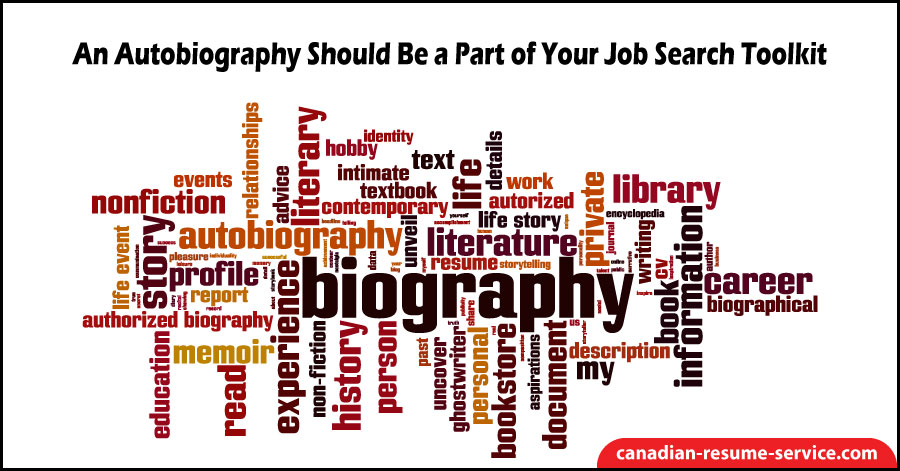An autobiography should be a part of your job search toolkit. Management professionals, especially those in higher-end positions, use autobiographies in their portfolios more today than ever. Career changers and business owners also use autobiographies in their portfolios to explain career transitions or detail the path leading to their entrepreneurial success.
Why Include an Autobiography?
Stand Out from the Competition
Autobiographies offer several benefits for job seekers. For one, they are not widely used, making them an unexpected and unique addition to your application. Employers often encounter a sea of similar resumes and cover letters, so an autobiography can differentiate you and spark the reader’s interest. This distinction increases the likelihood of being remembered faster and longer by hiring managers.
Provide Depth and Context
An autobiography allows you to present yourself in greater depth than a resume can. It tells the story behind your achievements, offering insight into your motivations, values, and experiences. For employers, this can create a stronger connection and make your candidacy more compelling.
How to Compose an Effective Autobiography
Introduction
The introduction should immediately grab the reader’s attention. Begin by sharing where you were born and raised, and briefly overview how you arrived at your current location. For instance, mention any significant moves or life events that shaped your journey. Include information about your education, highlighting your areas of study and any standout accomplishments during your academic career. End the introduction with a strong statement outlining your career goals and aspirations.
Example:
“Born and raised in Chicago, I grew up with a deep appreciation for diversity and innovation. After earning my bachelor’s degree in business administration with honors from Northwestern University, I relocated to New York City to pursue opportunities in financial services. Today, I am eager to leverage my analytical skills and leadership experience to drive growth and impact in the tech industry.”
Middle Paragraphs
The body of your autobiography should focus on your training, employment history, strengths, and accomplishments. Organize this section chronologically or thematically, depending on what highlights your unique journey best.
- Education and Training: Describe your academic background in more detail. Include significant projects, internships, certifications, or workshops that contributed to your growth.Example: “During my time at Northwestern University, I participated in a competitive summer internship program with a top consulting firm, where I analyzed market trends and presented recommendations that were later implemented by a Fortune 500 client.”
- Professional Experience: Outline your career milestones, emphasizing key roles, responsibilities, and achievements. Discuss challenges you’ve overcome and skills you’ve developed that make you an asset to prospective employers.Example: “As a project manager for XYZ Corporation, I led a cross-functional team in launching a new product line that exceeded revenue projections by 15% within the first quarter. This role honed my ability to navigate complex projects and deliver results under tight deadlines.”
Addressing Unusual Circumstances
If your career path includes gaps, transitions, or other atypical elements, your autobiography is an excellent place to explain them positively and confidently.
Example: “In 2021, I took a career sabbatical to care for a family member. During this time, I completed a certification in digital marketing, ensuring I stayed current with industry trends. This experience enhanced my empathy and time management skills, which I bring to every professional endeavor.”
Final Paragraph
Conclude your autobiography by emphasizing your unique selling points and reinforcing your professional philosophy. Share how your experiences have shaped your approach to your field and restate your career objectives.
Example: “I believe that innovation thrives at the intersection of diverse perspectives and disciplined execution. My journey has equipped me with the ability to think strategically, collaborate effectively, and adapt to changing circumstances. As I pursue new challenges, I am committed to driving meaningful change and contributing to organizational success.”
Enhancing Your Autobiography
Tips for Success
- Brevity and Clarity: Keep your autobiography concise—ideally one to two pages. Use short paragraphs and sentences to maintain readability.
- White Space: Design your document with ample white space to keep the reader’s attention focused.
- Positive Tone: Focus on achievements and growth. Avoid sharing negative details or framing experiences in a way that may reflect poorly on you.
- Tailoring: Customize your autobiography for each application, emphasizing experiences and goals that align with the specific role or company.
Example Responses to Common Questions
Question: “Why did you choose to include an autobiography in your application?”
Response: “I included my autobiography to give a more personal and comprehensive overview of my journey. While my resume highlights my skills and accomplishments, the autobiography provides context, showcasing the experiences and values that drive my professional approach.”
Unusual Circumstance: Career Transition
Response Example: “After years in the healthcare sector, I transitioned to tech to pursue my passion for leveraging technology to solve complex problems. My autobiography details the training and projects that prepared me for this shift, as well as the unique perspective I bring to my new field.”
Conclusion
An autobiography is a powerful tool to set yourself apart in a competitive job market. By telling your story with authenticity and purpose, you not only enhance your application but also give employers a deeper understanding of who you are and what you bring to the table. Have you used an autobiography before? Comment and share your experience below! If you need additional help, reach out to Candace!

